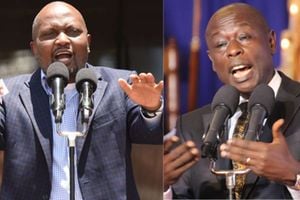Equilibrium rule technocrats need for ease of implementing policies

While policymakers are under pressure to enact policies, introducing them must be carefully thought through.
Economic policies are designed to stabilise the economy. Whenever recessionary or inflationary pressures destabilise the economy there are tools of fiscal and monetary policy that are used to influence economic outcomes. The global economy is yet to recover from the recessionary pressures.
While policymakers are under pressure to enact policies, introducing them must be carefully thought through.
At times, active policies are implemented that target the current economic problem but, in the long run, may exert an adverse effect. The effect of the UK mini-budget continues to make headlines. UK Finance Minister Kwasi Kwarteng’s mini-budget published on September 23, 2022 caused shockwaves.
While the country is grappling with the effects of the economic downturn, the mini-budget proposed tax cuts in a growth plan funded by government borrowing.
Days after the announcement, the British Government is expected to reverse the proposed scrapping of the highest rate of income tax.
A lesson here is, active policies need to be carefully thought through before implementing.
Design tools
There is also a choice with the policymakers to design tools according to some fixed rule or at discretion. Highly discretionary tools downgrade the credibility of people and thus proved to be time-inconsistent.
Although this situation is not unique to any one country, Kenyans continue to grapple with the rising cost of living, fuel price hikes, and impacted incomes. The US dollar continues to gain strength against the shilling.
This weakening can no longer be attributed to election-related uncertainty. Governments use monetary and fiscal tools to drive the economy. The monetary policy includes performing open market operations changing reserve requirements and the interest rate by changing the money supply.
Fiscal policy uses transfer payments, and government spending. The government, if it decides to pursue an expansionary policy, as is the case in Kenya, can simply select a tool from a toolbox and use it.
Active policy includes all actions done in response to the immediate economic conditions. It means the government chooses to respond to something in the economy by undertaking a policy, the choice of which depends on the existing state of the economic problem.
Therefore, this policy is called a discretionary policy. Active policy allows people to respond to the shifts in a complex economy and drive in the optimal direction.
Active policy responds swiftly to the shift from optimal as against the natural adjustment which takes long. However, the role of expectations is important in getting the desired results of any active policy.
For instance, if there are subsidies in place such as the fuel subsidy in Kenya, their immediate removal causes a shockwave with multiplier repercussions.
Not only this, active policy has a number of difficulties associated as it relies on the actions and experiences of policymakers and the government.
Weaknesses or prejudices
The weaknesses or prejudices of these policymakers can be translated into official documents. For instance, some active policies that enable the economy to grow in the short run regardless of the long-term effects are undertaken to serve the interest of some influential class or in the lead-up to elections.
Similarly, it may be possible for policymakers to pursue tools that achieve their selfish ends rather than those that are best for the economy.
The policymakers can say one thing but may find incentive to renege on their commitments. There may be benefits to making the public believe that something different is occurring rather than what actually is occurring.
It is reasonable to claim that active policy leaves monetary policy and fiscal policy open to not only accidental human error but also malicious and self-serving acts.
For the success of these active policies, accurate forecasting is a prerequisite otherwise costs may surpass the desired benefits of adopting them. Apart from this, the problem of lags makes the execution of active policies more difficult.
In contrast, passive policy is based on policy-making by rule. A passive policy may follow the rule that to stabilise the economy, the interest rate must be dropped one point whenever the nominal GDP falls one per cent.
Passive policy by rule uses policymakers to implement rather than design macroeconomic tools. The approach is based on optimising the economy in the long-run and is less likely to trade short-run prosperity for long-term growth.
Naturally, a hybrid of both is required at times for effectiveness. The use of any stabilisation policy encounters time lags between the onset of a problem and the full impact of the policy designed to correct the problem.
Monetary policy
Decision and implementation lags are comparatively shorter for the monetary policy as compared to the fiscal policy. This is because the decisions about the monetary policies are taken by the central bank along with a small committee while the fiscal policy decisions are made involving the ruling party, opposition and by passing laws which takes more time.
Monetary policy works through the financial markets that tend to adjust quickly. Fiscal policy, on the other hand, takes a long implementation lag as it needs to pass through various bureaucratic hurdles. Modern central banks and monetary authorities have increasingly shed secrecy and mystique to engage in communicating to the public their policy framework and rationale, their goals, and the manner in which they intend to achieve their stated objectives.
Economic conditions are not static but fairly dynamic, so a given rule which works in one set of conditions may not work in another.
When designing solutions for the economy, policymakers must remember that rules are pertaining to the whole economy not to individual sectors, thus making them a general equilibrium rule.
Many economists have provided viewpoints that can act as guidelines, such as Taylors rule on how central banks should change interest rates to account for inflation and other economic conditions, or McCallum’s rule for monetary policy targeting nominal GDP by setting the growth rate of monetary supply.
However, policies are made taking a wholesome view of the economy, all factors affecting it, and the long-term repercussions. Those that are time-inconsistent will be reversed in the future due to predictable developments over time.
Ritesh Barot is a business and financial analyst, [email protected]





